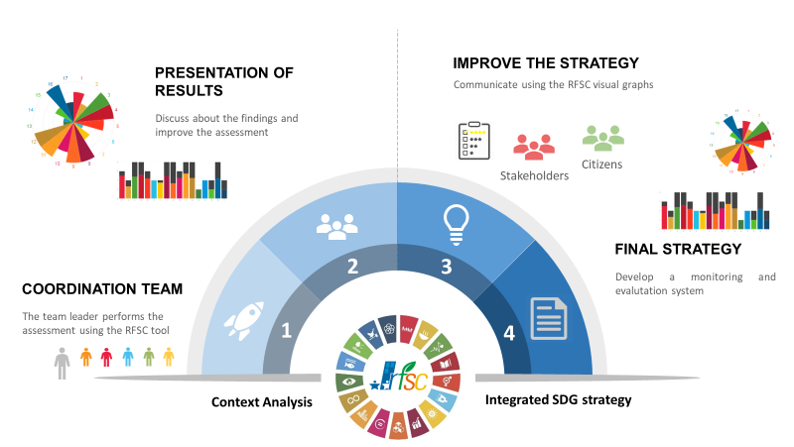The RFSC enables engagement of local governments practitioners and stakeholders
3 steps to engage your team and stakeholders in the SDG journey with the RFSC
Undergoing a self-assessment at local level is not a one-man job. Like the holistic approach of the Agenda 2030, it entails collaboration and coordination with colleagues across departments within a local government. Accordingly, the RFSC does not only provide a tool to self-assess your progress in the localisation of Sustainable Development Goals (SDGs) but also assists stakeholder engagement processes. It compels to define roles and responsibilities in different departments (social affairs, environment, communication, public transport, etc.) and helps design a governance structure for the localisation of the SDGs.
Step n°1
It starts with the coordination team. Led by a team leader that performs the first iteration of the RFSC self-assessment, the coordination team provides inputs and guides the team leader in the assessment to ensure that it reflects the local context and its specific issues and priorities.
Step n°2
When the first self-assessment is completed, the results can be presented to a broader audience. Probably to other departments if they have not been involved yet, but most likely to other colleagues and to higher level of the decision-making process. Such presentation allows to discuss the results further, improves the assessment and starts the reflection on the decisions taken, the priorities set and the policy planned.
Step n°3
Now that the self-assessment has been conducted and refined within the local government, it can easily be communicated and presented to urban development stakeholders and citizen. At this stage, the RFSC is a crucial tool to increase citizen understanding and ownership of the SDGs.
The RFSC graphs are of great help to engage stakeholders, like the civil society, academia or private sector, on the various topics tackled by the SDGs. By presenting which SDG is of highest importance with the graph, stakeholders can easily discuss the relevance and pertinence of such prioritisation. The bar graphs generated by the RFSC, present the actions taken by a local government to implement the SDGs, and how these local actions contribute to each of the SDGs. Here again, the visuals offer meaningful support to start a conversation and gather inputs on the type of actions implemented, their extent, scope and contribution to specific SDGs.
Overall, the RFSC allows for more than an assessment, and can guide local government in their stakeholder engagement actions, their localisation and prioritisation processes and the setting up of their governance structure, while learning by doing.
